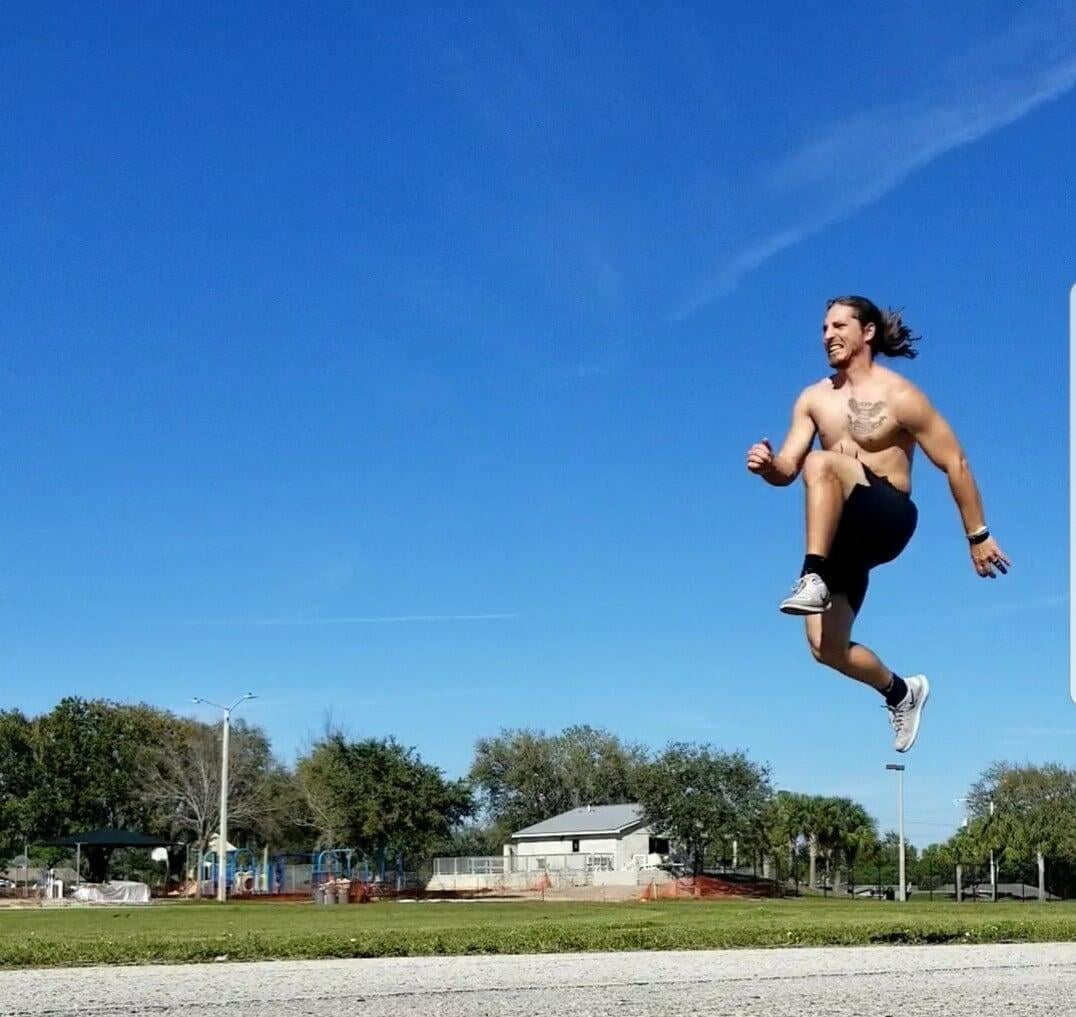
In today’s post, we’re going to generate ideas to maximize efficiency in a warm up period. I’ll try to give you a well-rounded picture of the intent of a warm up and explain some of the specifics we use. I am a huge fan of the “RAMP” method which Mike Young uses due to its simplicity as well as its fluid nature.
First of all, you need to raise the core temperature of your body, which to us this looks like jump rope or skipping in a more dynamic session with an assault bike or a med ball movement circuit in the weight room setting. This will result in a consistent sweat that will carry on into the meat of the program. This could be a 2-5 minute process based on environmental as well as scheduling factors (air temp or if practice was just finished). I suggest you do something enjoyable to create a positive mental space for the rest of the session.
Another warm up goal is to activate higher intensity elements in order to tune up physical as well as neurological patterns that we are looking to create in training. This would look like a more powerful skip outside or a med ball slam indoors. With a sprint workout, this could take 10-15 minutes as we use plenty of rest to keep power production high. In the weight room, I like to fit this in as a superset (a paired motion to our main motion for the session) with specific buildup to the main movement for the day; ex: the med ball slams with an explosive landmine overhead press.
Aim to include movements that mobilize the joints that we are targeting for the meat of the session. This is actually a fairly general aim, and hips and shoulders are always a good target. We can become more specific based on task for the day; ex: wrist mobility when cleaning or doing a front squat. In an outdoor space, this will look similar to a med ball movement circuit we would do in the beginning of a weight room lift. Also consider adding on a more dynamic stretch to the end of a high-intensity session to help drop heart rate while working through large ranges of motions. On the other hand, I usually incorporate this into the first activities of the session to slowly help raise the body’s temperature as well as demand ranges of motion in a weight-based session. I may sprinkle these exercises in throughout the whole training period as a superset or even a cardiovascular burner at the end of the indoor session.
On Google, potentiate is defined as an “increase in power, effect, or likelihood of (something, especially a drug or physiological reaction).” We use this phase in all of our high speed workouts and it can look similar to the skip above or weighted sprints. We like to use our Exergenie to create a sled style run. In the weight room, we usually either lift heavy followed by a vertical jump variation or vice versa.
There is no wrong way to set up a warm up unless there is no warmup. If crunched for time, use bodyweight pump sets to get things flowing. Ex: 2 sets of pushups for 2 sets of 10-20 repetitions (aim to sweat) followed by the main upper body movement for the day. On the lower half, an easy (side) lunge followed by repeat low intensity squat jumps would be a good answer to hit aspects of the above “RAMP” protocol. If you received any benefit or have any critiques from this information please let us know on our IG account abspsouthshore or become a client for more information on how we can help guide your training on our Thyrv platform through the client tab up top.

